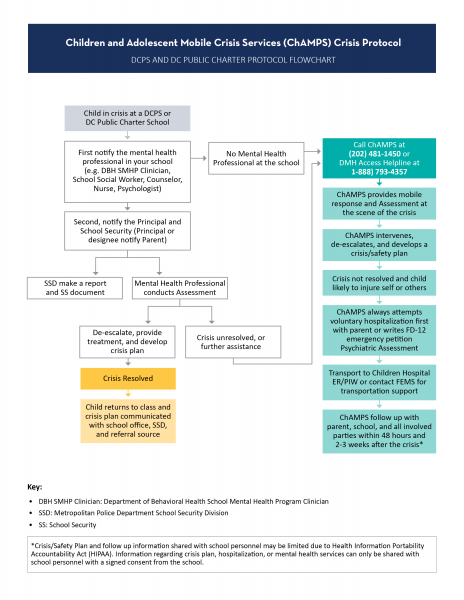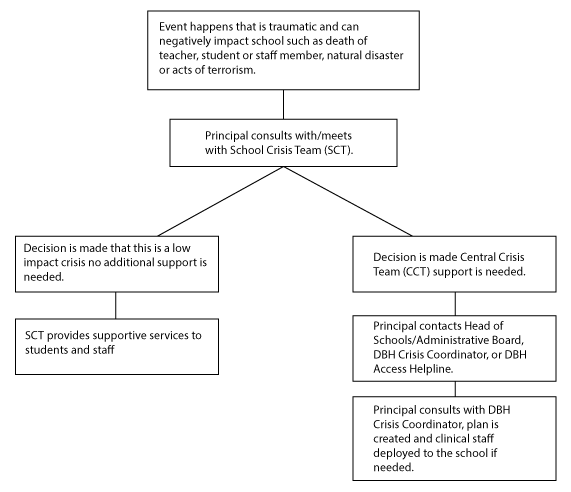When a crisis touches a school community, the aftermath may have ripple effects among the school, causing secondary traumatic stress, depression, insecurity, and pain amongst the student body, school staff, and families. After a school experiences a crisis that involves a student, staff, student’s family, or the greater community, the school must be prepared to field questions, connect students to counseling and mental health services, and reassure the community that the school offers a safe learning environment. If a school does not consider the immediate ramifications of a crisis, it may experience difficulty returning to a normal routine and a positive learning environment.
A school crisis might include, but is not limited to: assault of a student or student’s family member, missing student, violence resulting in death, student accidental overdose, sexual harassment or assault of a student, and death or attempted death by suicide of a student or staff member. A school crisis may result in emotional and traumatic impact on the school community, even if the event happened off school grounds.
How to Respond During a Crisis | How to Respond in the Immediate Aftermath of a Crisis
How to Respond During a Crisis
During an incident in which student and staff safety is at risk, the primary role of the school is to protect students and staff from harm. School administrators should carefully evaluate situations when deciding to involve law enforcement. For example, most disciplinary incidents do not require police officers or security. School administrators should be familiar with local and federal school safety laws and regulations, and should know the protocols for when and how to contact the Metropolitan Police Department.
For imminent danger situations, call 911.
In situations where a student may be of danger to himself/herself, please follow your school’s Mental Health Crisis Protocol:

If there are no mental health professionals in the school, the principal shall notify the child’s parent and call ChAMPS at (202) 481-1450.
If the child is in crisis at home or in the community, the staff person or parent shall call ChAMPS at (202) 481-1440.
|
Children and Adolescent Mobile Psychiatric Services (ChAMPS) |
||
|---|---|---|
|
ChAMPS is an emergency response service for children, teenagers and adolescent who are experiencing a mental health or behavioral health crisis. ChAMPS is partnered with the DBH, local hospitals, and the District of Columbia’s Metropolitan Police Department to provide help for children living in the District and facing a behavioral or mental health crisis. ChAMPS comes to a school the same day at no charge and is available 24-hours a day, seven-days-a-week for youth aged 6-18, and up to age 21 for fostered youth. |
Address: 1001 Lawrence St. NE |
|
How to Respond in the Immediate Aftermath of a Crisis
A crisis may occur on or off school grounds, but both have the prospect of causing harm to the wellness of the school community. The actions taken immediately following a school crisis will have an impact on the wellness of students, staff, and the school community at-large. The school administration should maintain lines of communication with District agencies, law enforcement, and the school community. Students and staff may require access to both short-term and long-term care, counseling, and support systems.
Principals and School Crisis Teams (SCT) should convene and determine what information, intervention, and support is needed in the immediate aftermath of a crisis. A School Crisis Team should be comprised of the principal, assistant principal(s), school social worker(s), school counselor(s), school psychologist(s), nurse, and on-site community mental health providers, as applicable.

To learn more about essential DC programs and services available to support student, staff, and family mental health and wellbeing in the aftermath of a crisis, please visit the Supporting Mental Health in Schools webpage and the OSSE School Mental Health Guidelines.


